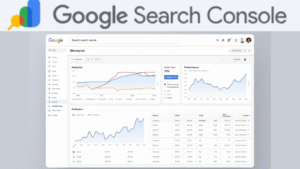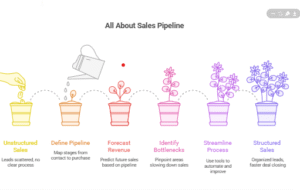Imagine launching a well-designed website full of valuable content — yet Google barely notices it. The problem? Search engines don’t automatically know where all your pages are located. This is where the .XML Sitemap comes in — a powerful SEO tool that guides search engines through your website’s structure, helping them discover, crawl, and index your pages efficiently.
For business owners, marketers, and SEO professionals, understanding how to create and optimize an XML sitemap is a critical step in improving visibility and ranking. In this complete guide, we’ll explain everything about XML sitemaps — what they are, why they matter, and how you can use them to strengthen your overall SEO strategy.
What Is an XML Sitemap?
An XML Sitemap (Extensible Markup Language sitemap) is a structured file that lists all the URLs on your website that you want search engines to crawl and index. It acts like a map for crawlers, helping Google, Bing, and other search engines understand your site’s hierarchy and content structure.
In simple terms, an XML sitemap is like giving Google a “cheat sheet” of your entire website.
A sample XML sitemap looks like this:
<?xml version="1.0" encoding="UTF-8"?>
<urlset
xmlns="http://www.sitemaps.org/schemas/sitemap/0.9">
<url>
<loc>https://www.kkfreelancer.in/</loc>
<lastmod>2025-10-01</lastmod>
<priority>1.0</priority>
</url>
<url>
<loc>https://www.kkfreelancer.in/seo-service/</loc>
<lastmod>2025-09-28</lastmod>
<priority>0.8</priority>
</url>
</urlset>
Why XML Sitemaps Are Important for SEO
Search engines constantly crawl the web to find and index pages. However, without a proper sitemap, some of your pages may remain hidden — especially if your site is large, new, or lacks sufficient backlinks.
Key Benefits of an XML Sitemap
- Improves Crawl Efficiency
XML sitemaps tell search engines which URLs to prioritize, saving crawl budget and improving indexing rates. - Ensures New Pages Are Indexed Faster
When you publish new content, adding it to your sitemap helps Google find and index it quickly. - Supports Large or Dynamic Websites
For eCommerce or content-heavy websites, sitemaps are essential for ensuring deep pages aren’t missed. - Boosts SEO Visibility
More indexed pages mean more chances to appear in search results. - Integrates with Google Search Console
Submitting your sitemap to Search Console provides crawl reports and error insights.
Types of Sitemaps: Understanding the Difference
| Type | Description | Best For |
|---|---|---|
| XML Sitemap | A structured file for search engines | SEO optimization |
| News Sitemap | Designed for Google News websites | News publishers |
| Image Sitemap | Lists image URLs for better image indexing | Photographers, eCommerce sites |
| Video Sitemap | Focuses on video content for search visibility | Video content creators |
| Mobile Sitemap | Helps with mobile-specific pages | Mobile apps or AMP sites |
| HTML Sitemap | A user-friendly page linking to all site sections | User navigation and UX |
💡 Note: While the .XML Sitemap helps search engines, the bold Html Site Map assists users in exploring your website easily.
How to Create an XML Sitemap
Creating an XML sitemap doesn’t have to be complicated. You can generate one manually, use a plugin, or rely on tools.
1. Using CMS Plugins (WordPress Example)
- Yoast SEO: Automatically creates and updates your sitemap at
https://yoursite.com/sitemap_index.xml. - Rank Math SEO: Offers advanced sitemap customization and category exclusion.
2. Using Online Tools
- XML-Sitemaps.com
- Screaming Frog SEO Spider
- Ahrefs Webmaster Tools
3. Creating Manually
If your website is small, you can manually write an XML file (as shown earlier) and upload it to your website’s root folder.
Where to Submit Your XML Sitemap
After creating your .XML Sitemap, you must submit it to search engines to ensure proper indexing.
Google Search Console
- Login to Google Search Console.
- Select your property (domain).
- Go to “Indexing” → “Sitemaps.”
- Enter your sitemap URL (e.g.,
https://www.kkfreelancer.in/sitemap.xml). - Click Submit.
Bing Webmaster Tools
Similar process: Go to “Sitemaps” and submit your sitemap URL.
💡 Pro Tip: Always reference your sitemap in your bold robots.txt File like this:
Sitemap: https://www.kkfreelancer.in/sitemap.xml
Best Practices for Optimizing XML Sitemaps
To get the most SEO value from your .XML Sitemap, follow these proven practices:
- ✅ Include only canonical (original) URLs.
- ✅ Limit each sitemap to 50,000 URLs or 50MB per file.
- ✅ Exclude 404, duplicate, or redirected URLs.
- ✅ Update your sitemap automatically when new pages are added.
- ✅ Add
<lastmod>tags to help Google understand update frequency. - ✅ Submit sitemap index files for large websites.
- ✅ Validate your sitemap using tools like Google Search Console or XML Sitemap Validator.
Common XML Sitemap Errors (and How to Fix Them)
| Error | Cause | Solution |
|---|---|---|
| Sitemap not found | Wrong file path | Ensure it’s in the root directory |
| Invalid URL format | Incorrect syntax | Use full URLs with https:// |
| Duplicate URLs | Same pages listed multiple times | Remove duplicates |
| Blocked by robots.txt | Crawl restrictions | Update your robots.txt file |
| 404 or 500 errors | Deleted or broken pages | Remove or update URLs |
Advanced Strategies for Sitemap Optimization
1. Prioritize High-Value Pages
Set higher priority for pages like service, category, or blog pages that drive conversions.
2. Segment by Content Type
Large websites should have multiple sitemaps — one each for pages, blogs, products, and images.
3. Track Sitemap Performance
Use Google Search Console to track how many pages are submitted vs indexed.
4. Integrate with Other SEO Elements
Your sitemap works in harmony with other SEO factors, including bold Schema Markup List and robots.txt File, ensuring maximum crawl efficiency.
Example: Sitemap Strategy for kkfreelancer.in
As part of our SEO Services at kkfreelancer.in, we use an XML sitemap structure like:
/sitemap-pages.xml– Core website pages/sitemap-blog.xml– Blog articles/sitemap-services.xml– Service-specific pages
This structure helps search engines crawl efficiently while ensuring fresh content like blog posts and service updates are indexed faster.
How XML Sitemap Impacts SEO Performance
Here’s how a well-optimized sitemap directly benefits your site’s SEO:
- Enhances crawl coverage and indexation
- Improves keyword visibility in SERPs
- Helps recover crawl issues faster
- Reduces duplicate indexing errors
- Supports new page discovery after website updates
According to Search Engine Journal, websites with optimized sitemaps see a 20–30% faster index rate than those without one.
.XML Sitemap vs HTML Sitemap
| Feature | XML Sitemap | HTML Sitemap |
|---|---|---|
| Audience | Search engines | Website visitors |
| Format | Machine-readable (XML) | Human-readable (HTML) |
| SEO Purpose | Crawl and index optimization | Better user experience |
| Example | /sitemap.xml | /site-map.html |
Both complement each other — while .XML Sitemap improves technical SEO, HTML Site Map enhances UX and navigation.
Conclusion: Strengthen Your SEO with a Perfect XML Sitemap
A .XML Sitemap is a small but essential file that can have a major impact on your SEO performance. It ensures search engines discover all your important pages efficiently, improves indexation, and supports your overall technical SEO health.
If you want professional help to set up or optimize your sitemap, reach out to kkfreelancer — your trusted partner for SEO, PPC, and AI-based optimization services.
You can also visit our SEO Service page to learn how we help businesses rank higher or explore our blog section for more SEO insights and guides.
FAQs About XML Sitemaps
It helps search engines find and index all important pages on your website efficiently.
In the root directory of your site (e.g., https://www.kkfreelancer.in/sitemap.xml).
Whenever you add, delete, or modify significant pages on your website.
Indirectly, yes. It ensures proper crawling and indexing, which supports higher visibility in search results.
The XML sitemap is for search engines, while the HTML sitemap is designed for user navigation.





